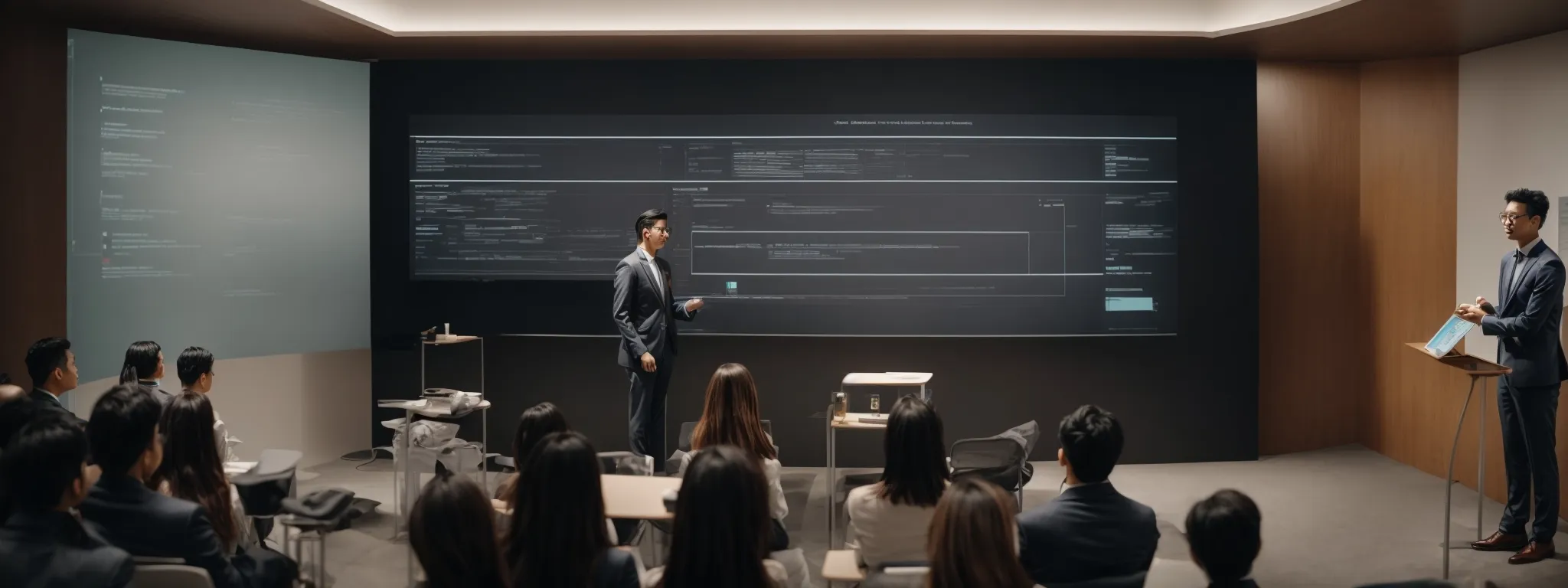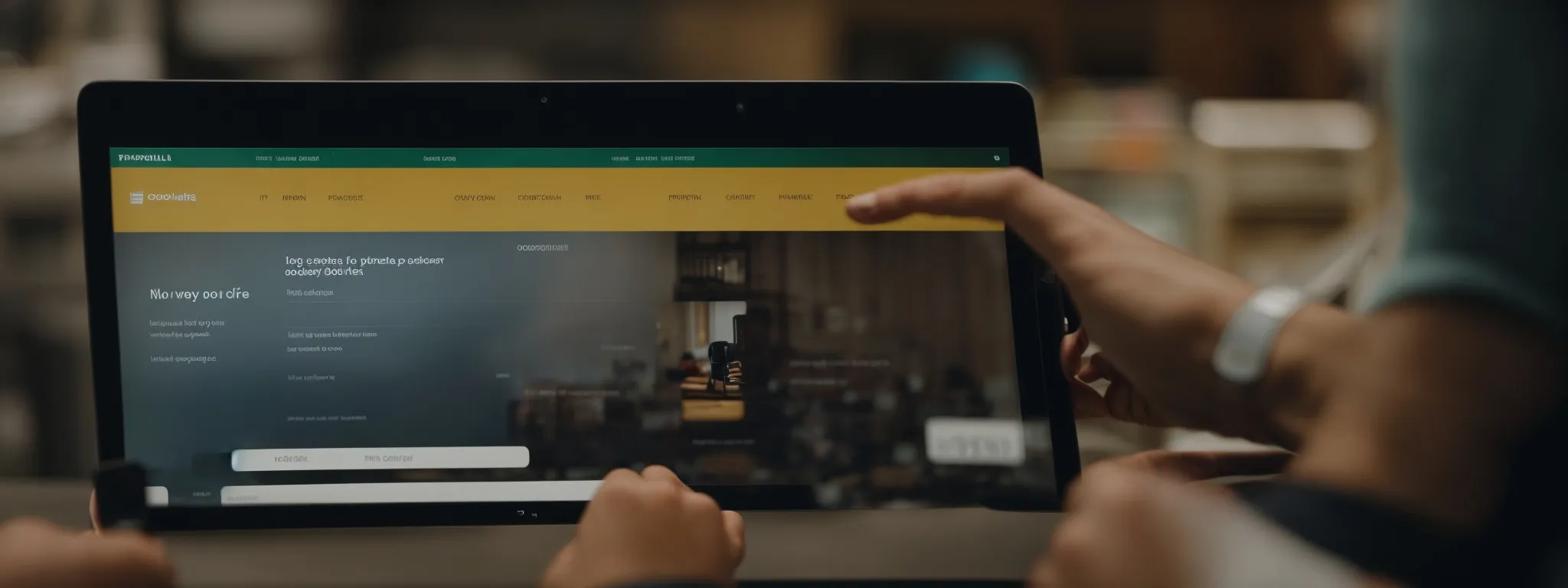Navigating the Digital Marketing Funnel
Mastering Your Strategy: Navigating the Digital Marketing Funnel Navigating the complexities of the digital marketing funnel is reminiscent of steering a ship through the ever-changing tides of […]
Navigating the complexities of the digital marketing funnel is reminiscent of steering a ship through the ever-changing tides of consumer engagement and purchasing behavior.
In its essence, the funnel represents the customer journey, starting from the initial awareness stage and culminating in a purchase, followed by loyalty and advocacy.
The intricate dance of attracting, engaging, and retaining customers demands a symphony of well-executed strategies and tools like LinkGraph and SearchAtlas SEO software, to ensure each phase resonates with the target audience.
Mastery over this process can transform prospects into advocates and significantly bolster a company’s online presence and profitability.
Keep reading to discover how integrating smart digital marketing practices can streamline your marketing funnel from top to bottom.
Key Takeaways
- The Digital Marketing Funnel Is an Essential Model for Understanding Consumer Behavior and Guiding Marketing Strategies
- Tailored Content and Automated Personalization Play Critical Roles in Advancing Consumers Through the Funnel Stages
- Social Media Acts as a Significant Driver of Brand Advocacy Throughout the Entire Marketing Funnel
- Email Marketing Remains a Versatile Tool for Engaging and Nurturing Consumers From Awareness to Loyalty
- Analytical Tools Like LinkGraph and SearchAtlas SEO Software Are Vital for Refining Strategies and Optimizing the Marketing Funnel
Understanding the Essentials of a Digital Marketing Funnel

In the dynamic realm of digital marketing, professionals keenly focus on the pivotal framework known as the marketing funnel—a schematic that mirrors the intricate customer journey from initial awareness to the final act of purchase.
Encompassing a spectrum of stages, each defined by its purpose and consumer mindset, this funnel is crucial for crafting targeted, impactful campaigns.
What often sets successful strategies apart is the integration of digital touchpoints, those vital interactions that steadily guide potential buyers down the funnel.
As one delves deeper, understanding both the theoretical underpinnings of the funnel concept and its practical applications becomes indispensable for any marketing team striving to convert prospects into loyal advocates.
Defining the Marketing Funnel Concept
At its core, the digital marketing funnel is a model that illustrates the gradual stages a consumer traverses, from the moment they become aware of a brand to the point where they complete a transaction. It serves as a blueprint for marketers to understand and influence consumer behavior at each stage effectively.
Within this journey, specific strategies are employed to nurture the consumer’s interest, turning passive onlookers into engaged users who are primed to act. The marketing funnel provides a structured approach, ensuring that no potential customer falls through the cracks as they move closer to conversion:
| Funnel Stage | Consumer Mindset | Marketing Focus |
|---|---|---|
| Awareness | Gaining brand visibility | Content Marketing, SEO |
| Consideration | Evaluating options | PPC Google Ads, Email Campaigns |
| Decision | Ready to purchase | SEO Reputation Management, Trust Signals |
| Loyalty | Post-purchase experience | Customer Service, Retention Campaigns |
| Advocacy | Brand endorsement | Social Media Marketing, Referral Programs |
How a Marketing Funnel Reflects Customer Journey
The marketing funnel serves as a vivid representation of the customer journey, encapsulating their progression from their first encounter with a brand to the eventual endorsement that characterizes ultimate loyalty. By mirroring the myriad of touchpoints and decisions a potential buyer navigates, the funnel model provides a Strategic Canvas upon which digital marketers can paint targeted initiatives designed to engage and propel the customer forward.
At each juncture of the funnel, user behavior is carefully analyzed to Finely Tune Marketing Efforts, ensuring content and messaging resonate with the evolving needs and inclinations of consumers. It is within these nuanced interactions that marketers can harness the power of data and strategic planning to transform a casual visitor into an avid supporter, thereby optimizing the effectiveness of the comprehensive digital marketing schema.
The Role of Digital Touchpoints in the Funnel
Digital touchpoints are the intersections where prospects interact with a brand’s digital assets, and these moments play a critical role in the effectiveness of the marketing funnel. By carefully curating touchpoints such as PPC Google Ads, SEO content, and social media interactions, digital marketers offer multiple opportunities for consumer engagement, guiding them through the funnel stages.
It’s at these touchpoints that brands can make an impactful impression, shaping the user’s perception and influencing their path towards conversion. Tailoring these interactions to align with the consumer’s stage within the funnel maximizes the potential of each engagement, helping to foster a seamless journey from initial awareness to advocacy.
Decoding the Top of the Funnel: Attracting Prospects

As organizations venture into the expansive arena of digital marketing, mastering the top of the funnel is paramount for generating initial interest and capturing the attention of potential customers.
Here, the focus lies on creating compelling content that ignites curiosity, utilizing diverse channels that can amplify reach, and implementing analytical tools that monitor engagement at this crucial introduction phase.
This sophisticated blend of tactics equips marketing specialists to cast a wide net, effectively garnering the interest of prospects and setting the stage for a deeper, more meaningful interaction.
Crafting Content to Spark Interest
In the genesis of the digital marketing funnel, content serves as the beacon that captures the initial gaze of the audience. Through the strategic embodiment of the brand’s core message, professionals craft narratives and resources that resonate, encouraging the target market to embark on the buyer’s journey.
Marketers aim to create content that not only informs and entertains but also aligns with the user’s search intent and fosters brand authority. This content, whether it take the form of informative blog posts, engaging videos, or insightful newsletters, acts as the foundation for a robust inbound marketing strategy, setting the stage for all subsequent marketing efforts.
| Content Type | Purpose | Role in Top of the Funnel |
|---|---|---|
| Blog Posts | Educate and Inform | Attract organic search traffic |
| Videos | Engage and Retain | Boost session times and user engagement |
| Newsletters | Nurture and Convert | Keep the audience informed and ready to act |
Effective Channels for Reaching a Broad Audience
Reaching a broad audience necessitates a multichannel approach, leveraging both organic and paid avenues to maximize visibility. Social media platforms, with their vast user bases, serve as a critical arena for brand exposure, while SEO-driven content ensures that a brand’s message aligns with the search queries of a relevant audience.
Complementing these organic strategies, PPC Google Ads target users who have signaled intent through their search behavior, delivering tailored messages that enhance brand reach. Activating these diverse channels harmoniously constructs a web of digital touchpoints that attract and engage a comprehensive array of prospects:
| Channel | Target | Strategy |
|---|---|---|
| Social Media | Broad Audience | Engagement and Brand Exposure |
| SEO Content | Relevant Search Users | Organic Search Visibility |
| PPC Google Ads | Intent-driven Users | Direct Messaging and Conversion |
Each channel is purposefully selected and meticulously optimized to not only introduce the brand but also to captivate and pull the target market toward the subsequent stages of the funnel, paving the way for deeper engagement and conversion prospects.
Tools to Measure Top-Funnel Engagement
Mastering the initial phase of the digital marketing funnel hinges on the precise assessment of user engagement, where LinkGraph and SearchAtlas by LinkGraph offer cutting-edge solutions. Their Sophisticated Analytics Tools enable marketers to gauge the efficacy of content, track audience behavior, and measure the allure of various marketing channels.
With insights derived from these tools, companies gain the ability to refine their strategies in real-time. The data obtained facilitates a granular understanding of how top-of-the-funnel interactions translate into subsequent interest and eventual conversions, optimizing the effectiveness of campaigns from the outset.
Nurturing Leads in the Middle of the Funnel

Progressing through the digital marketing funnel, attention shifts from the broad-reaching tactics at the top to the middle—often referred to as the consideration stage.
Here, digital marketing professionals are tasked with maintaining and intensifying the interest of their now-aware audience.
Crafting strategies that sustain engagement and persuasively address the individual needs of prospects becomes the linchpin.
Precision in segmenting audiences and personalization of marketing touchpoints ensure that communications resonate with each unique subset of the target market.
Additionally, reliability in measuring campaign impact is vital, with key performance indicators (KPIs) specific to this phase providing the insights necessary to refine and progress strategies toward the bottom of the funnel.
Strategies for Maintaining Prospect Interest
Maintaining the interest of prospects in the midst of the funnel necessitates offering value that aligns with their evolving needs. Digital marketers utilize advanced keyword research strategies and employ an SEO Content Assistant to ensure that the materials not only attract but also retain a visitor’s engagement, fostering a deeper connection with the brand.
Pivotal to sustaining a prospect’s intrigue is the delivery of personalized content, potential through the use of a content planning tool, which allows for the crafting of material that addresses individual pain points and curiosities. This personal touch transforms passive visitors into active participants in the funnel, inching them closer to the decision stage.
Segmenting Your Audience for Personalized Marketing
Segmentation represents a cornerstone of mid-funnel marketing, where the goal is to transform general interest into actionable engagement. By dividing the target audience into distinct groups based on characteristics such as demographics, behavior, or purchase history, digital marketers can tailor their messaging to resonate with each specific segment.
This approach facilitates the delivery of personalized experiences that are more likely to meet the individual expectations of each group. Marketers empowered by tools like SearchAtlas SEO software adeptly create content that speaks directly to the segmented audience’s needs, significantly enhancing the effectiveness of their digital marketing campaigns.
Key Performance Indicators for the Consideration Phase
Performance tracking in the consideration phase hinges on understanding which Key Performance Indicators (KPIs) most accurately reflect prospect engagement and interest. These metrics cater to the current needs of the audience, with a focus on assessing the quality of interactions and the depth of user involvement.
Digital marketers rely on KPIs such as page views, time spent on site, and interaction rates with targeted content, which are critical for determining whether the strategies employed resonate with the evolving interests of consumers. These data points provide tangible insights that guide the refinement of campaigns, ensuring they align more closely with the objectives of the consideration phase.
Converting at the Bottom of the Funnel: The Final Push

Descending to the narrowest point of the digital marketing funnel, strategists concentrate their efforts on the pivotal conversion stage.
This phase is where meticulous cultivation of prospects culminates, urging them toward making a decisive purchase.
Fostering a sense of urgency and offering compelling incentives becomes paramount to tip the scales in favor of transaction completion.
Simultaneously, ensuring a frictionless checkout experience is critical to preclude any last-minute hesitations that might derail the conversion.
Furthermore, vigilance in monitoring conversion rates proves indispensable for the continuous optimization of marketing tactics.
This bottom-of-the-funnel endeavor is not merely about securing a sale; it’s an intricate dance of precision and persuasion that, when executed adeptly, transforms interested prospects into satisfied customers.
Creating Urgency and Incentives for Purchase
At the core of the bottom funnel lies the art of creating urgency, a psychological trigger that propels the prospect towards making a swift decision. The strategic implementation of time-sensitive offers or limited availability signals can effectively stimulate this urgency, increasing the likelihood that a consumer takes the final leap to purchase.
The power of incentives cannot be overstated in encouraging that final decision. Whether it’s through exclusive discounts, bundled deals, or the promise of added value, such offers make the prospect feel they are gaining more while acting now. This emotional appeal can often be the catalyst needed for converting interest into definitive action:
| Tactic | Objective | Impact on Conversion |
|---|---|---|
| Time-sensitive Offers | Create Urgency | Encourage Immediate Action |
| Limited Availability | Induce Scarcity | Heighten Desire to Acquire |
| Exclusive Discounts | Provide Incentive | Increase Perceived Value |
Streamlining the Checkout Process
A streamlined checkout process serves as a crucial element in ensuring the transition from prospect to customer is as smooth and frictionless as possible. By minimizing obstacles and simplifying transaction procedures, businesses increase the likelihood of successfully sealing the deal at this critical juncture in the marketing funnel.
Digital marketing specialists apply a meticulous touch to the checkout experience, from optimizing page loading speeds to ensuring clarity in the purchasing pathway. This attention to detail minimizes cart abandonment rates and instills a sense of confidence in buyers, facilitating a positive outcome at the pivotal conversion stage.
Tracking Conversion Rates and Optimizing Tactics
Tracking conversion rates stands as a fundamental aspect of evaluating the success of digital marketing strategies at the bottom of the funnel. As customers reach the final stages of their buying journey, understanding these metrics allows businesses to pinpoint the efficacy of their tactics and make data-driven decisions for optimization.
| Conversion Metric | Role in Funnel | Optimization Action |
|---|---|---|
| Conversion Rate | Measure success of final push | Analyze and improve call-to-actions |
| Cart Abandonment Rate | Assess checkout efficacy | Simplify the payment process |
| Average Order Value | Gauge customer spending behavior | Implement upselling strategies |
With actionable insights gleaned from these conversion rate analyses, digital marketing professionals can refine their approaches: optimizing call-to-actions, simplifying transaction processes, and tailoring communication to reduce customer drop-off. This process is crucial for businesses aiming to stretch their marketing dollars and secure a higher return on investment with every campaign executed.
Retention Strategies Post-Purchase in the Funnel

Within the nuanced tapestry of the digital marketing funnel, the post-purchase phase represents a critical point in the pursuit of lasting customer relationships.
Here, the strategies pivot from conversion to retention, with a focus on nurturing the connection between the brand and its patrons.
It is in this stage where the true test of customer service and marketing ingenuity unfolds, as businesses strive to transform new customers into repeating buyers and vocal advocates.
Topics such as enhancing the customer experience to foster brand loyalty, the implementation of effective follow-up campaigns, and the definitive metrics that gauge retention success become paramount in solidifying the consumer’s allegiance to the brand.
Enhancing Customer Experience to Encourage Loyalty
Retaining customers in the aftermath of a sale is a strategic endeavor that revolves around refining the customer experience to stimulate brand loyalty. Brands that prioritize a seamless post-purchase interaction create a conducive environment for fostering customer contentment and loyalty. This consideration can significantly boost customer retention rates, transforming first-time buyers into staunch brand advocates.
Critical to this undertaking is the notion that the customer journey doesn’t conclude with a purchase; rather, it evolves into an ongoing cycle of engagement. Enlightened businesses strive to exceed expectations, delivering exceptional service, and unparalleled value that form the underpinnings of brand loyalty. Contented customers often become enthusiastic supporters, providing valuable testimonials and word-of-mouth referrals:
| Post-Purchase Element | Goal | Influence on Loyalty |
|---|---|---|
| Customer Service Excellence | Resolve issues swiftly | Enhances trust and satisfaction |
| Value-add Offers | Deliver added benefits | Encourages repeat engagement |
| Follow-up Communication | Maintain brand connection | Keeps brand top-of-mind |
Implementing Effective Follow-Up Campaigns
For digital marketing teams, follow-up campaigns are essential in solidifying the customer’s journey beyond the initial sale. Post-purchase communication keeps the brand relevant and encourages customers to repeat their buying experience, capitalizing on the foundation laid during the initial transaction.
These campaigns are strategically designed to offer relevant content, updates, and special offers that reinforce the customer’s decision to engage with the brand: a critical step in cultivating long-term loyalty and generating positive word of mouth.
| Campaign Type | Objective | Retention Impact |
|---|---|---|
| Email Marketing | Re-engage Customers | Boosts repeat purchase rates |
| Loyalty Programs | Incentivize Continued Business | Enhances customer lifetime value |
| Feedback Surveys | Gather Customer Insights | Drives product improvement and satisfaction |
The Metrics That Matter for Retention Success
In measuring retention success, customer lifecycle metrics serve as the compass by which businesses can navigate the complexities of post-purchase consumer behavior. These measurements, such as repeat purchase rate and customer lifetime value, provide a window into the consumer’s ongoing relationship with the brand: are they a one-time buyer or a loyal repeat customer?
Awareness of Net Promoter Score (NPS) also emerges as a key indicator, reflecting the likelihood of customers to recommend a company to others—a testament to overall satisfaction and a precursor to organic growth. Strategic attention to these metrics ensures that retention efforts yield measurable results, clearly delineating the success of initiatives designed to cultivate enduring customer relationships:
- Repeat Purchase Rate: Monitors frequency of customer repurchases.
- Customer Lifetime Value: Estimates the total revenue a business can expect from a single customer account.
- Net Promoter Score: Gauges customer experience and predicts business growth.
Leveraging Automation to Propel Through the Funnel

Embracing the complexity of the digital marketing funnel, industry leaders are increasingly turning to automation as a driving force for efficiency and efficacy.
This pivotal technology aids in streamlining communication, ensuring timely and relevant interactions across every funnel stage.
By employing tools that automate lead scoring and management, businesses gain the capacity to quickly identify and prioritize high-value prospects.
Furthermore, modern automation technologies offer personalization at an unprecedented scale, allowing for the delivery of customized content to each user, enhancing the individual journey through the funnel stages.
Leveraging automation becomes a transformative strategy for marketers aiming to outpace the competition and deliver results that resonate with both efficiency and precision.
Tools for Automating Communication at Each Stage
Automation has revolutionized the way digital marketers engage with their target audience across various stages of the marketing funnel. Innovative platforms such as LinkGraph’s SearchAtlas SEO software enable the deployment of automated email sequences, ensuring each prospect receives pertinent and timely information, guiding them closer to conversion with minimal manual oversight.
By harnessing the capabilities of these sophisticated tools, marketing teams can schedule automated social media posts and targeted ad campaigns that activate based on specific triggers within the customer journey. The thoughtful application of this technology by LinkGraph ensures consistent, personalized communication that is both relevant and impactful at every stage of the digital marketing funnel.
Benefits of Automated Lead Scoring and Management
Advancements in automated lead scoring have transformed the fabric of digital marketing, equipping teams with the acumen to swiftly decipher a lead’s potential value. Utilizing algorithms and machine learning, these systems analyze user engagement and behavior patterns to rank prospects, effectively streamlining priority-setting and resource allocation.
Management of leads through automation offers an invaluable consistency in nurturing leads at scale, ensuring no prospect’s interest wanes due to lack of timely follow-up. Marketing professionals leverage this technology from LinkGraph to maintain an organized and efficient pathway through the funnel, bolstering the odds of conversion and, ultimately, enhancing the return on investment for their marketing efforts.
Personalization at Scale With Automation Technologies
In the crowded and competitive digital marketing landscape, the push towards personalization is crucial for connecting with individual consumers on a more meaningful level. Automation technologies facilitate this shift by enabling brands to deliver custom-tailored content and offers to their audience, despite the vastness of their reach. This approach not only enriches the customer experience but also significantly increases the efficiency and effectiveness of marketing initiatives.
LinkGraph’s SearchAtlas SEO software epitomizes the capability to implement personalization at a scale that aligns with the demands of modern consumers. It allows marketers to dissect vast amounts of user data and preferences, triggering bespoke communications rooted in a deep understanding of each customer’s unique journey. In doing so, it fosters a sense of relevancy and value that nurtures brand affiliation and drives the marketing funnel towards favorable outcomes.
Integrating Social Media Into Your Digital Funnel

In the intricately connected ecosystem of digital marketing, social media emerges as a linchpin for nourishing the entire span of the marketing funnel.
The pervasive influence of platforms like Facebook, Instagram, and LinkedIn fuel a firm’s ability to forge lasting relationships with their audience.
As an interactive channel, social media facilitates a dialogue with users that goes beyond simple brand exposure, artfully guiding them from awareness through advocacy, shaping both perceptions and conversions.
Taking a methodical approach to integrate social media marketing into the funnel amplifies the voice of the brand, ensuring that marketing objectives transition smoothly from one stage to the next, and the right measures are deployed to monitor social media’s palpable impact on overall funnel performance.
Building Brand Advocacy Through Social Engagement
The transformative role of social media in the digital marketing funnel is epitomized in its ability to sculpt brand advocates from casual followers. Through thoughtful engagement and genuine interaction, companies create a nurturing environment where users are inspired to share their positive brand experiences, effectively amplifying marketing messages through the most trusted form of advertising: word-of-mouth.
By providing a platform where feedback is not only heard but acted upon, businesses fortify consumer trust and champion community-building. These actions are crucial in solidifying long-term relationships, driving both retention and advocacy as customers organically disseminate their enthusiasm for the brand across their networks.
Aligning Social Media Goals With Funnel Objectives
For digital marketers, aligning social media goals with the broader objectives of the digital marketing funnel is pivotal in ensuring a cohesive strategy. It involves setting specific targets for each stage of the funnel—such as boosting brand awareness on social platforms at the top of the funnel or driving targeted engagement that leads to conversions at the bottom. By establishing these clear goals, social media efforts are strategically focused to support and propel the entire marketing campaign.
The integration of social media strategies within the funnel necessitates a nuanced approach, with the firm understanding that social platforms play distinct roles at various funnel stages. Efforts on social media must be adept at not only attracting a target audience but also nurturing and advancing them toward the desired action. Tailoring content and interactions to the needs and preferences of users at each stage reinforces the digital marketing funnel’s effectiveness and allows for a seamless transition from awareness to advocacy.
Measuring Social Media’s Impact on Funnel Performance
Assessing the precise impact of social media on digital marketing funnel performance requires meticulous scrutiny of user actions and reactions to social content at different stages. Firms rely on robust metrics such as engagement rates, click-through rates, and conversion analytics afforded by tools like LinkGraph’s SearchAtlas, which offers a clear view into how social interactions contribute to movement within the funnel.
This thorough analysis assists marketers in corroborating the return on investment from social media campaigns, informing optimized strategies for future endeavors. Through SearchAtlas’s comprehensive insights, an organization can fine-tune its social content to better align with funnel objectives, continuously advancing its digital marketing agenda with precision and informed confidence.
The Power of Email Marketing in the Digital Funnel

In the swiftly evolving landscape of digital marketing, email marketing emerges as a stalwart that navigates consumer engagement through the marketing funnel.
With its capacity to target consumers directly and personally, email remains a pivotal element in driving the prospects from initial awareness to the affirming act of loyalty.
Strategic crafting of email campaigns tailored to each funnel stage, meticulous A/B testing of subject lines and content, and the analytical rigor applied to email metrics coalesce to enhance funnel movement.
These potent tactics refine the marketer’s approach, ensuring emails serve as both a compass and conveyor through the myriad phases of the consumer’s journey.
Crafting Email Campaigns for Different Funnel Stages
Email marketing’s versatility means it adapts seamlessly across various stages of the digital marketing funnel, becoming especially potent when tailored to the unique demands of each phase. At the awareness stage, emails work to intrigue and educate, introducing the brand and its values, while in the consideration phase, the focus shifts to showcasing depth, expertise, and differentiators that set the company apart.
Transitioning toward the funnel’s decisive conversion stage, email campaigns are sharpened to drive action, featuring strong calls to action, urgency-inducing offers, and clear pathways to purchase. After the sale, the emphasis of email communication moves to nurturing the relationship, providing valuable content, reaffirming the purchase decision, and inviting feedback, thereby fostering an ongoing dialogue that supports customer retention and loyalty.
A/B Testing Subject Lines and Content for Better Results
A/B testing serves as a sharpened instrument in the digital marketer’s toolkit, allowing for intricate experimentation with email subject lines and content. This method involves sending two variants to different segments of the audience and analyzing which one performs better in terms of open rates, click-through rates, and subsequent conversions.
By methodically tweaking and comparing the results, marketers refine the elements that capture attention and prompt action, creating the most effective email campaigns. These incremental improvements, rigorously tested, culminate in a more compelling email strategy that resonates with recipients and drives them further down the marketing funnel:
| Email Element | Variant A | Variant B | Success Metric |
|---|---|---|---|
| Subject Line | Catchy Question | Direct Benefit Statement | Open Rate |
| Content | Storytelling Approach | Statistical Data | Click-Through Rate |
| Call-to-Action | Time-sensitive Offer | Exclusive Discount Code | Conversion Rate |
Analyzing Email Metrics to Improve Funnel Movement
In the intricate dance of digital marketing, analyzing email metrics stands as a pivotal step towards understanding and enhancing the movement within the marketing funnel. Marketers embarking on this analytical journey employ metrics such as email deliverability rates, engagement levels, and subscriber growth patterns to gain actionable insights into campaign performance.
This rigorous examination of data clarifies which emails effectively resonate with recipients and drive them toward the desired action, offering a clear direction for strategic improvements. Emphasis is placed on fine-tuning email frequency, content relevance, and segmentation tactics to ensure that each email sent fortifies its role as a persuasive force in funnel progression.
Improving Funnel Efficiency With Data Analytics

In the highly competitive landscape of digital marketing, efficiency often becomes the linchpin that distinguishes a thriving campaign from an underperforming one.
With the rising complexity of consumer interactions and the proliferation of marketing channels, navigating the digital marketing funnel effectively demands a meticulous application of data analytics.
Engaging with this critical step empowers marketing professionals to identify patterns and trends in customer behavior, fine-tune their initiatives for heightened impact, and leverage platforms specifically designed for comprehensive marketing data analysis.
As organizations harness these analytical powers, the path through the intricate layers of the marketing funnel becomes more intuitive, targeting efforts sharpen, and marketing strategies yield optimized results that align with the ever-evolving needs and expectations of their target audience.
Identifying Patterns and Trends in Customer Behavior
In the realm of digital marketing, scrutinizing customer behavior yields a wealth of insights, allowing marketers to anticipate needs and optimize strategies. By observing and interpreting how users engage with content and digital touchpoints, patterns begin to surface, providing actionable intelligence used to refine marketing approaches and enhance the relevance of campaigns to the target market’s interests.
Utilizing data analytics tools, digital marketing professionals distill large datasets to discern underlying trends that reveal the preferences and habits of consumers. This understanding becomes a strategic asset in tailoring the marketing funnel to complement user behavior, fostering a greater alignment between consumer desires and the marketing initiatives designed to satisfy them, thus streamlining the path to conversion.
Utilizing Data to Optimize Marketing Efforts
In the pursuit of optimizing marketing efforts, data stands as a beacon, guiding digital marketing professionals in their decision-making processes. With the application of advanced analytics, companies can pierce through the noise and distill data points that inform tailored marketing strategies, allowing for a more agile and targeted approach within the digital marketing funnel.
From SearchAtlas SEO software’s granular insights to LinkGraph’s comprehensive reporting, the potent tools available empower marketers to continuously refine their campaigns across all digital PR services and marketing channels. By leveraging these robust analytics, businesses systematically enhance campaign performance, ensuring each marketing move is data-driven and meticulously tuned for maximum impact.
Tools and Platforms for Marketing Data Analysis
When it comes to dissecting the myriad of data encountered in digital marketing, marketers are equipped with a vanguard of analytical tools such as those proffered by LinkGraph and SearchAtlas SEO software, which serve as cornerstones for data-driven decision-making. These platforms offer a panoramic view of digital performance metrics, allowing marketers to delve deep into user engagement, conversion patterns, and campaign efficiency with unprecedented accuracy and granularity.
LinkGraph’s suite of analytics tools and the SearchAtlas platform are instrumental in elevating marketing strategies, enabling professionals to distil insights from complex data sets and translate them into actionable tactics. They provide the clarity needed to make informed adjustments that amplify marketing efficacy, rendering the path through each stage of the digital marketing funnel both articulate and effective.
Experimenting and Refining Your Funnel Strategy

In a landscape where the nature of consumer interactions is constantly shifting, the imperative for mastery within the digital marketing funnel mandates an agile approach to strategy.
Forward-thinking marketers recognize that strategic experimentation and continuous refinement are the keys to steering potential customers through the funnel stages with finesse.
Indeed, through the skillful application of A/B testing, the integration of customer feedback, and the insightful analysis of funnel metrics, businesses can sharpen their tactics resulting in a more seamless and effective progression from awareness to advocacy.
Each of these components acts as a vital cog in the larger mechanism of the marketing process, ensuring decisions are data-informed and consumer-centric, thus bolstering the overall health and efficiency of marketing strategies.
Conducting a/B Tests to Improve Funnel Flow
In navigating the digital marketing funnel, A/B testing emerges as a powerful tool, permitting marketers to meticulously fine-tune their strategies based on direct consumer feedback. By testing different elements across marketing collateral, from email subject lines to landing page designs, teams can identify the variants that most effectively drive users through the funnel stages, bolstering the overall flow and efficiency of their campaigns.
Employing A/B tests to examine variations in calls to action, content presentation, and user journeys enables marketing professionals to iteratively improve the customer pathway. Such experimentation is instrumental in optimizing conversion rates at critical points in the funnel, leading to more targeted and successful marketing strategies that resonate with the consumer base.
Incorporating Customer Feedback for Refinement
Incorporating customer feedback into the digital marketing funnel serves as a barometer for the efficacy of marketing strategies, allowing firms to finetune their approach toward a more personalized consumer experience. Actively soliciting and implementing feedback showcases a brand’s commitment to meeting the needs and expectations of its audience, thereby enhancing the overall effectiveness of the funnel.
By weaving customer insights into decision-making processes, marketers empower their strategies with a level of refinement that goes beyond mere guesswork. This tailored approach ensures that marketing initiatives are continuously aligned with evolving consumer preferences, driving improvements in the funnel that lead to lasting customer satisfaction and retention.
Learning From Funnel Analytics to Make Adjustments
Insights gleaned from funnel analytics are invaluable for the continuous improvement of digital marketing strategies. By examining the nuanced data on user interactions, marketers identify bottlenecks and areas of friction within the funnel, allowing for targeted adjustments that enhance the fluidity of the customer journey and improve conversion rates.
Embracing the dynamic feedback provided by analytics platforms such as SearchAtlas SEO software, digital marketers uncover trends and pivot points within the consumer pathway. This strategic application of knowledge empowers them to recalibrate their tactics, ensuring marketing efforts remain agile and responsive to user behavior, and the digital marketing funnel performs with optimal efficiency.
Crafting Compelling Content for Each Funnel Stage

As digital marketing professionals traverse the depths of the digital marketing funnel, the significance of tailored content becomes increasingly apparent.
The creation of targeted content pieces is a strategic affair, precisely engineered to suit each distinct stage of the consumer’s journey and directly influence their progression towards the next phase.
Early in the funnel, blog posts play a crucial role in seeding awareness, where they serve as lighthouses amidst the boundless digital ocean, guiding prospects toward discovery and recognition.
As potential consumers delve further into the funnel, eBooks and webinars provide substantive content that bolsters evaluation during the consideration phase, offering deeper insights and solidifying the brand’s industry authority.
Ultimately, at the pivotal convergence of decision-making, compelling case studies and persuasive testimonials underpin the credibility necessary to tip the balance towards conversion, enabling marketers to architect a conversion-centric approach with unparalleled precision and effectiveness.
The Role of Blog Posts at the Awareness Stage
At the inception of the digital marketing funnel, blog posts act as a pivotal tool for generating awareness among the target audience. They introduce the brand and its propositions subtly, laying the groundwork for establishing thought leadership and boosting search engine visibility through rich, SEO-optimized content.
Their usage at this initial stage fosters familiarity and trust, crucial elements that entice visitors to delve deeper into what the brand offers. Armed with informative and engaging blog content, marketers can effectively orchestrate the audience’s gradual transition from curious onlookers to informed prospects.
Using Ebooks and Webinars for Consideration
Ebooks and webinars act as fundamental tools during the consideration stage of the digital marketing funnel, offering rich, in-depth content that fosters a prospect’s engagement. These resources exhibit the brand’s expertise and thought leadership, building a strong case for why a consumer should favor the company’s solutions.
By delving into detailed subject matter relevant to the target market, ebooks and webinars effectively address the prospect’s pain points and equip them with valuable knowledge, progressing them towards a more informed decision-making stance:
| Content Format | Objective | Role in Consideration Stage |
|---|---|---|
| Ebooks | Provide Comprehensive Insight | Deepen the prospect’s understanding of the brand’s value proposition |
| Webinars | Promote Interactive Learning | Engage prospects through real-time information sharing and Q&A sessions |
Crafting Case Studies and Testimonials for Conversion
In the decisive phase of the digital marketing funnel, case studies and testimonials become instrumental in nudging a prospect towards a purchase. These powerful story-driven tools showcase the real-world applications and benefits of a product or service, instilling trust and diminishing hesitations by presenting tangible proof of success.
- Case studies illustrate a product’s resolution of specific challenges, providing a narrative that prospects can relate to and envision in their context.
- Testimonials offer authentic endorsements from satisfied customers, serving as peer validation that can sway the decision-making process.
These elements, when strategically placed on landing pages and throughout conversion-focused content, act as persuasive testimony to the efficacy and value proposition of a brand. They resonate with prospects at a crucial juncture, transforming skepticism into confidence and facilitating the final transition from considering to buying.
Conclusion
Mastering the digital marketing funnel is integral to the success of any online campaign.
This comprehensive approach facilitates understanding the consumer journey from initial awareness to eventual advocacy.
By creating and leveraging diverse content like blog posts, videos, and newsletters, marketers can attract prospects, while tools like PPC Google Ads and SEO steer them through consideration and decision-making phases.
A clear, high-quality checkout experience and follow-up campaigns with personalized touchpoints enhance conversion and loyalty.
Automation technology boosts efficiency across these stages, allowing for scaled personalization and more effective lead management.
Incorporating social media, refining email marketing tactics, meticulously analyzing data analytics, and continually tweaking the strategy based on A/B testing and customer feedback, ensure the funnel is optimized for engaging consumer interactions.
Ultimately, crafting compelling content tailored to each stage of the funnel is crucial.
This dedicated approach propels the consumer’s seamless progression from discovery to purchase, maximizing the marketing strategy’s effectiveness and driving business growth.














































































